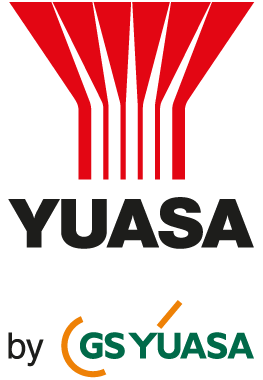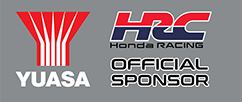Click here for more more detailed information
Product: AGM and Wet Flooded Lead-Acid Batteries
1. COMPANY:
Yuasa Battery Sales (UK) Ltd
Unit 13 Hunts Rise
South Marston Park
Swindon
Wiltshire
SN3 4TG
Telephone: +44 (0) 1793 833555
2. GENERAL COMPOSITION:
Lead, lead compounds and <35% sulphuric acid in a polypropylene or hard rubber case.
3. HAZARDS:
– Sulphuric acid is corrosive. It will cause burns and irritation to skin, eyes and respiratory tract.
– An explosive mixture of hydrogen and oxygen is given off ?during charging.
– Conductive objects in contact with live battery terminals can become hot enough to burn the skin. Sparks and molten metal may be ejected and could result in fire or explosion.
4. FIRST AID MEASURES:
INHALATION – Remove to fresh air, seek medical attention.
SKIN CONTACT – Immediately drench the affected area with clean water and remove any contaminated clothing. If any soreness or irritation persists seek medical advice.
EYE CONTACT – Immediately wash out the eyes with clean water for at least 10 minutes and always seek medical attention.
INGESTION – Do NOT induce vomiting. Make the patient drink as much water as possible and seek medical attention.
BURNS – Apply a sterile dressing and seek medical attention.
5. FIRE FIGHTING MEASURES:
EXTINGUISHING MEDIA – Dry powder, CO2, water spray.
SPECIAL HAZARDS – Burning batteries will produce toxic fume from the lead, acid and case material.
PROTECTIVE EQUIPMENT – Self contained respiratory equipment must be worn when dealing with fires.
6. ACCIDENTAL RELEASE MEASURES:
– Evacuate people from the affected area. Stop all smoking, eliminate sources of ignition and wear full protective clothing and chemical grade eye protection before dealing with the situation.
– Use sand dams to confine the spread of liquid and to prevent entry into drains not intended for corrosive liquids. Cover spillage liberally with soda ash or sodium bicarbonate until neutralised. Mop up cautiously using plenty of water.
See DISPOSAL CONSIDERATIONS for information on disposal of residue from fire and spillages.
7. HANDLING AND STORAGE:
- Do not wear nylon clothing, use insulated tools and remove or cover rings and bracelets with insulating material when working on or handling batteries.
- Keep all sources of ignition away from batteries.
- NEVER short circuit the terminals to establish whether ?or not a battery is charged.
- Keep the electrolyte topped up to the correct level.
- Recharge batteries at the rate recommended by the manufacturer in a well ventilated area.
- Disconnect the battery before working on or near any exposed part of the vehicle electrical system.
- Store batteries upright in single layers in a well ventilated area, never obstruct the cell vents.
- Batteries are heavy; correct lifting techniques should be employed when lifting and handling.
8. EXPOSURE CONTROLS/PERSONAL PROTECTION:
When there is a risk from acid splashes wear chemical goggles or a full face visor and acid proof protective clothing including gloves and boots.
Exposure to sulphuric acid mist generated during charging should be controlled by good natural ventilation or by local exhaust ventilation down to the current Occupational Exposure Standard given in HSE Guidance Note EH40.
Contact with lead is restricted to the battery terminals unless the case is damaged. Always wash the hands with soap and warm water after handling batteries.
9. PHYSICAL AND CHEMICAL PROPERTIES:
The lead and lead compounds are in the form of solids which can only be exposed if the battery case is damaged. Sulphuric acid is a corrosive liquid which can escape through the cell vents if the battery is tipped over.
10. STABILITY AND REACTIVITY:
Sulphuric acid will react violently with other acids, alkalis and oxidising agents. In some cases toxic fumes may be evolved. Chlorine gas is given off when sea water enters a lead-acid battery, top up with pure fresh water only.
11. TOXICOLOGICAL INFORMATION:
SKIN CONTACT – Sulphuric acid causes severe burns and tissue destruction.
EYE CONTACT – Sulphuric acid causes severe burns and tissue destruction.
INGESTION – Sulphuric acid causes severe corrosion of the mouth, throat and digestive tract.
– Lead and lead compounds are harmful if ingested.
INHALATION – Sulphuric acid mist generated during charging can irritate the nose, throat and upper respiratory tract.
– Lead can only be inhaled if released from the battery container and then reduced to a dry airborne dust. Prompt disposal of waste will prevent exposure by this route.
See DISPOSAL CONSIDERATIONS.
12. ECOLOGICAL INFORMATION:
Lead compounds and sulphuric acid will cause “harm” as defined in S29(5) of the Environmental Protection Act 1990.
13. DISPOSAL CONSIDERATIONS:
Damaged or spent batteries or residue from fires and spillages should be contained in closed acid proof receptacles, to prevent escape to the environment and disposed of as ?Special Waste.
See REGULATORY INFORMATION.
14. TRANSPORT INFORMATION:
AGM – VRLA BATTERIES
LAND Land Transport (ADR / RID)
- UN Number: UN2800
- ADR / RID Classification: Class 8
- Proper Shipping Name: BATTERIES, WET,
NON-SPILLABLE electric storage - Packing Group ADR: Not Assigned (NA)
- Label Required: Corrosive
- Tunnel Code: E
- ADR / RID: New and spent batteries are exempt from all
ADR / RID (special provision 598)
SEA Sea Transport (IMDG Code)
- UN Number: UN2800
- Classification: Class 8
- Proper Shipping Name: BATTERIES, WET,
NON-SPILLABLE electric storage - Packing Group: 3
- EmS: F-A, S-B
- Label Required: Corrosive
- Special Provision 238; they are therefore exempt from all IMDG codes and are not regulated for sea transport.
AIR Air Transport (IATA-DGR)
- UN Number: UN2800
- Classification: Class 8
- Proper Shipping Name: BATTERIES, WET,
NON-SPILLABLE electric storage - Packing Group: 3
- Label Required: Corrosive
- Special Provision A48, A67, A164
WET-FLOODED (WET, FILLED WITH ACID):
LAND Land Transport (ADR / RID)
- UN Number: UN2794
- ADR / RID Classification: Class 8
- Proper Shipping Name: BATTERIES, WET, FILLED ? WITH ACID
- Packing Group ADR: Not Assigned (NA)
- Label Required: Corrosive
- Classification Code: C11
- ADR / RID: New and spent batteries are exempt from all ADR / RID (special provision 598)
SEA Sea Transport (IMDG Code)
- UN Number: UN2794
- Classification: Class 8
- Proper Shipping Name: BATTERIES, WET, FILLED WITH ACID
- Packing Group: 3
- EmS: F-A, S-B
- Label Required: Corrosive
- Special Provision 295
AIR Air Transport (IATA-DGR)
- UN Number: UN2794
- Classification: 8 – Corrosives
- Proper Shipping Name: BATTERIES, WET, FILLED WITH ACID
- Packing Group: 3
- Label Required: Corrosive
15. REGULATORY INFORMATION:
CHIP: No label required for supply.
For conveyance see TRANSPORT INFORMATION.
COSHH: Sulphuric acid mist – for occupational Exposure Limit see HSE Guidance Note EH40.
LEAD: The repair of most automotive batteries is impracticable due to the materials and the type of construction used. In cases where repairs are possible, (e.g. the replacement of a traction battery cell), only competent persons should be allowed to undertake the work and reference should be made to the Control of Lead at Work Regulations 2002.
WASTE: All spent batteries and waste arising from spillages and fires must be disposed of in conformance with the National laws and regulations .



